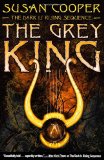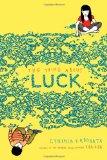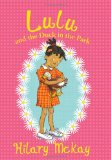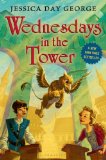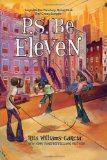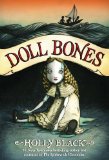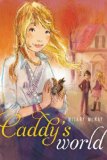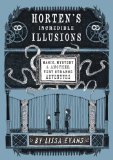Review of The Grey King, by Susan Cooper
by Susan Cooper
Performance by Richard Mitchley
2001, Listening Library. Book originally published in 1975. 5 compact discs; 5 hours, 40 minutes.
Starred Review
1976 Newbery Medal Winner
2012 Margaret Edwards Award Winner
I’m slowly rereading the Margaret Edwards-winning Dark is Rising series by Susan Cooper. I never discovered them as a child, so I’m afraid they don’t have the magic to me I think they would have had if I had read them at a younger age. And I’d only read them once before, but that was enough to know they’d be worth reading again.
In general, I’m not crazy about the plot of these books. In this one, Will is pretty much led by the nose. He senses what he’s supposed to do as he’s supposed to do it. There’s a rhyme that he has forgotten at the start of the book, but it comes back when he needs it, which doesn’t surprise us. In fact, as an Old One, Will has what amounts to superpowers, and that makes it hard to worry much about him. The kid he joins up with, Bran Davis, is far more interesting, and we do wonder at times if he will make it through.
What these books are strong on is atmosphere. The Grey King is set in Wales, and Susan Cooper makes you feel like you’re there, with the mountain like a presence. The surprising plot development (which I’d completely forgotten) adds to the sense of magic and the weight of history. Maybe you don’t expect the Light to fail, but Susan Cooper spins a yarn that keeps you interested in the quest and keeps you feeling that there’s magic in the air.
Of course, listening to this volume added much to the experience. The Welsh and English accents were delightful to listen to, and it only added to the strong sense of place. A classic worth enjoying again.
Find this review on Sonderbooks at: www.sonderbooks.com/Childrens_Fiction/grey_king.html
Disclosure: I am an Amazon Affiliate, and will earn a small percentage if you order a book on Amazon after clicking through from my site.
Source: This review is based on a library audiobook from Fairfax County Public Library.
Disclaimer: I am a professional librarian, but I maintain my website and blogs on my own time. The views expressed are solely my own, and in no way represent the official views of my employer or of any committee or group of which I am part.
Please use the comments if you’ve read the book and want to discuss spoilers!
